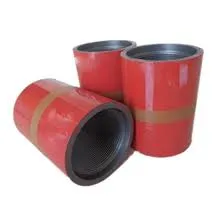- Afrikaans
- Albanian
- Amharic
- Arabic
- Armenian
- Azerbaijani
- Basque
- Belarusian
- Bengali
- Bosnian
- Bulgarian
- Catalan
- Cebuano
- Corsican
- Croatian
- Czech
- Danish
- Dutch
- English
- Esperanto
- Estonian
- Finnish
- French
- Frisian
- Galician
- Georgian
- German
- Greek
- Gujarati
- Haitian Creole
- hausa
- hawaiian
- Hebrew
- Hindi
- Miao
- Hungarian
- Icelandic
- igbo
- Indonesian
- irish
- Italian
- Japanese
- Javanese
- Kannada
- kazakh
- Khmer
- Rwandese
- Korean
- Kurdish
- Kyrgyz
- Lao
- Latin
- Latvian
- Lithuanian
- Luxembourgish
- Macedonian
- Malgashi
- Malay
- Malayalam
- Maltese
- Maori
- Marathi
- Mongolian
- Myanmar
- Nepali
- Norwegian
- Norwegian
- Occitan
- Pashto
- Persian
- Polish
- Portuguese
- Punjabi
- Romanian
- Russian
- Samoan
- Scottish Gaelic
- Serbian
- Sesotho
- Shona
- Sindhi
- Sinhala
- Slovak
- Slovenian
- Somali
- Spanish
- Sundanese
- Swahili
- Swedish
- Tagalog
- Tajik
- Tamil
- Tatar
- Telugu
- Thai
- Turkish
- Turkmen
- Ukrainian
- Urdu
- Uighur
- Uzbek
- Vietnamese
- Welsh
- Bantu
- Yiddish
- Yoruba
- Zulu
Exploring Crossover Technologies in Puppetry and Joint Mechanisms for Enhanced Movement
Understanding Crossover in Pup Joint Mechanics
Crossover in pup joints is a pivotal concept in the realm of mechanical engineering, particularly within the oil and gas industry. Pup joints are short lengths of pipe used to adjust the overall length of the drilling string, allowing for precise control of downhole operations. Their design and function play a significant role in optimizing drilling efficiency and ensuring safety. This article delves into the importance of crossover in pup joints and its implications for drilling operations.
What is a Pup Joint?
A pup joint is a type of short pipe segment used in various applications, primarily in oil drilling. It serves to extend the length of a wellbore or to make adjustments to the drilling assembly. Typically made from steel due to its strength and durability, pup joints can come in a range of sizes and thicknesses depending on the specific requirements of the drilling operation.
Introduction to Crossover
Crossover, in the context of pup joints, refers to the transition from one type of pipe or joint to another. This is especially critical when drilling operations require different diameters or strengths in the assembly. The crossover must seamlessly connect these varying components while maintaining pressure integrity and mechanical strength.
Importance of Crossover in Drilling Operations
crossover pup joint

1. Flexibility One of the significant advantages of incorporating crossover in pup joints is the flexibility it offers during drilling operations. Different sections of the well may require different joint specifications due to changes in geological conditions. Crossover joints enable drillers to adapt their equipment quickly and efficiently.
2. Pressure Control Maintaining pressure is crucial in drilling operations to prevent blowouts and other hazardous situations. The design of crossover joints must ensure there are no weak points that could compromise pressure integrity. The specialized engineering behind these joints is tailored to withstand the pressures encountered in deep wells.
3. Efficiency Utilizing crossover pup joints allows for swift modifications to the drilling strategy without the need for complete overhauls of the drilling string. This adaptability can result in significant time savings, leading to lower operational costs and increased overall productivity.
4. Safety Safety is paramount in drilling operations. Crossover joints need to be designed with robust materials that meet rigorous industry standards. A failure in a crossover joint can lead to catastrophic results, including equipment damage and jeopardizing workers' safety. Therefore, ensuring the quality and reliability of these joints is essential.
Conclusion
In conclusion, crossover in pup joints is an integral aspect of modern drilling practices. By enabling flexibility, ensuring pressure control, enhancing efficiency, and ultimately prioritizing safety, crossover pup joints have become indispensable in the oil and gas sector. As drilling technologies continue to evolve, so too will the designs and materials used in crossover pup joints, further improving their performance and reliability.
For engineers and drilling teams, understanding the nuances of crossover in pup joints can lead to better decision-making and more effective management of drilling challenges. As the industry pushes towards deeper and more complex wells, the ongoing development of crossover technology will be essential for meeting future demands. It is a fascinating synergy of engineering, innovation, and practicality that exemplifies the complexities of modern resource extraction.
-
Tubing Pup Joints: Essential Components for Oil and Gas OperationsNewsJul.10,2025
-
Pup Joints: Essential Components for Reliable Drilling OperationsNewsJul.10,2025
-
Pipe Couplings: Connecting Your World EfficientlyNewsJul.10,2025
-
Mastering Oilfield Operations with Quality Tubing and CasingNewsJul.10,2025
-
High-Quality Casing Couplings for Every NeedNewsJul.10,2025
-
Boost Your Drilling Efficiency with Premium Crossover Tools & Seating NipplesNewsJul.10,2025







